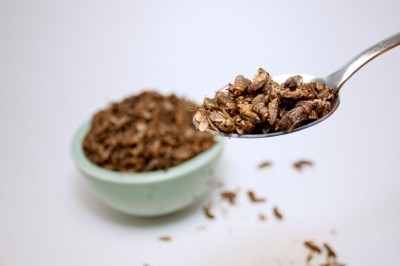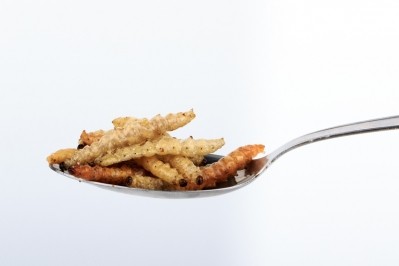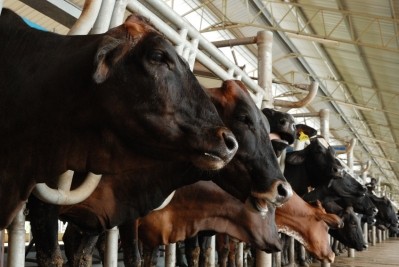Edible crickets can be reared on food by-products, study says
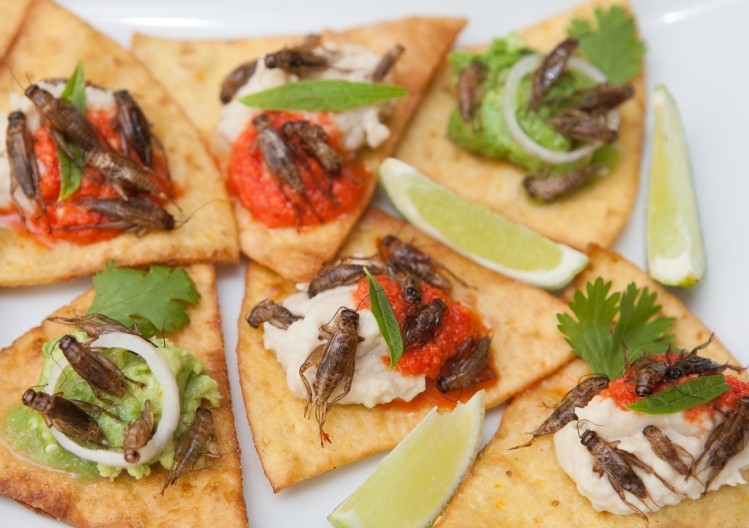
The findings of a Swedish study further confirm the viability of using crickets as an environmentally friendly and cost-efficient protein alternative.
According to the research team the use of sustainable cricket rearing systems that use low feed costs and a healthy species population is the key to their adoption and success.
Despite their high nutritional value, cricket consumption has been met with a cautious welcome, particularly in the Western nations.
This is in contrast to other parts of the world, such as Asia, where there is a history of insect consumption. Some species, such as the wood worm and bamboo worm insect, are regarded as delicacies.
“Since there are both climate and environmental benefits of eating insects, we believe that this habit will become more common, also in Western countries,” said study lead author Dr Anna Jansson, professor of animal physiology at the Swedish University of Agricultural Sciences.
“What our study shows is that it is possible to rear crickets on feeds that don’t compete with other kinds of food production,” she added.
Cassava for crickets?
Researchers from the Swedish University of Agricultural Sciences focused their efforts on Cambodian field crickets (Teleogryllus testaceus).
Here, the insects were fed local weed species, known as Cleome rutidosperma (Fringed Spider Flower or Purple Cleome), as well as agricultural and food industry by-products such as cassava tops.
The findings revealed that overall survival did not differ between chicken feed and the experimental treatments with no difference in weight recorded between crickets fed chicken feed, and cassava tops.
Jansson explained that crickets are usually reared on chicken feed. However, this approach has few environmental benefits compared to chicken production as crickets and chickens grow equally well on this feed.
Also, the feed has proved expensive for people living in developing nations, and its high nutritional means people could eat it themselves to receive the same benefits.
“To be a climate and environmentally smart food, crickets have to be reared on feeds that have little value in other kinds of agricultural production, such as residues or weeds, and they must be cheap enough for poor people,” she added.
Finding uses for cassava tops
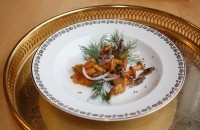
Tropical regions such as Brazil and parts of Southeast Asia consider the leaves and stems of the cassava plant as waste products.
However, analytical tests have identified the leaves as having a protein composition similar to that of alfalfa (approximately 17-20%).
Flour produced from the cassava plant is also known as tapioca flour. It is often used in baked or gelatinised goods or manufactured into glucose, dextrins and other products.
Last month, research into a natural gum that could be used to improve the functionality of tapioca starch without impacting ‘clean label’ claims, were put forward by US scientists.
The research suggested that gum arabic improved the functionality of native tapioca starch and that both ingredients resulted in highly viscous gels. The researchers believed these gels would open up new avenues of gums in the starch application market.
Source: Journal of Insects as Food and Feed
Published online ahead of print, doi.org/10.3920/JIFF2016.0028
“Growth and survival of reared Cambodian field crickets (Teleogryllus testaceus) fed weeds, agricultural and food industry by-products.”
Authors: Anna Jansson et al.

